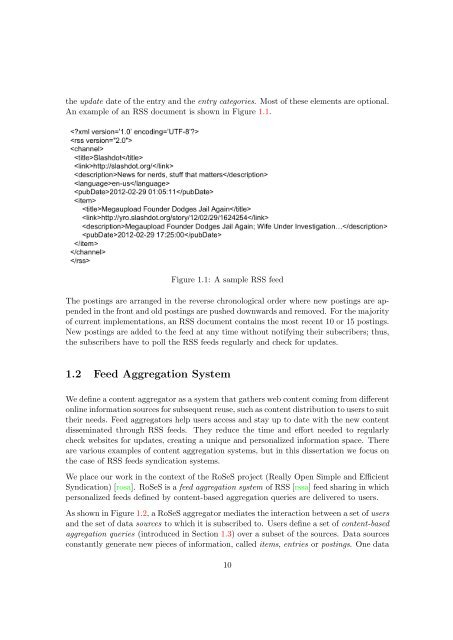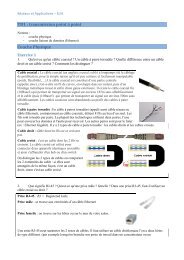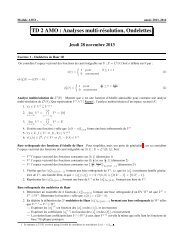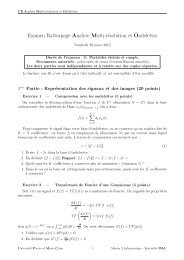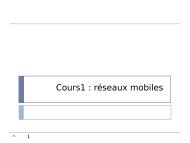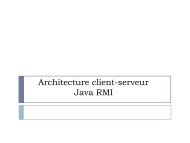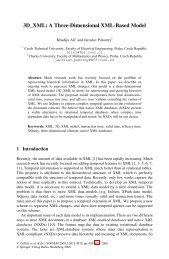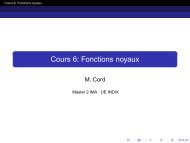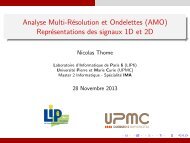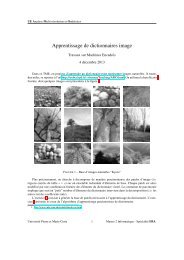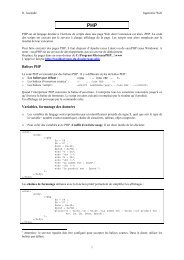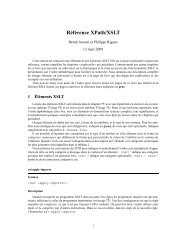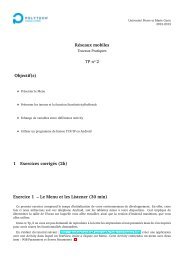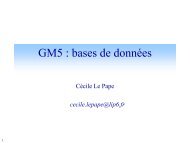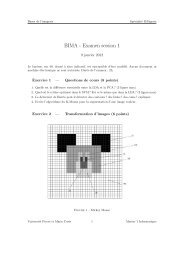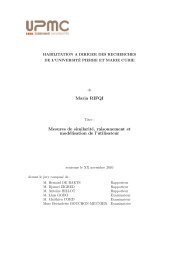Roxana - Gabriela HORINCAR Refresh Strategies and Online ... - LIP6
Roxana - Gabriela HORINCAR Refresh Strategies and Online ... - LIP6
Roxana - Gabriela HORINCAR Refresh Strategies and Online ... - LIP6
Create successful ePaper yourself
Turn your PDF publications into a flip-book with our unique Google optimized e-Paper software.
the update date of the entry <strong>and</strong> the entry categories. Most of these elements are optional.<br />
An example of an RSS document is shown in Figure 1.1.<br />
Figure 1.1: A sample RSS feed<br />
The postings are arranged in the reverse chronological order where new postings are appended<br />
in the front <strong>and</strong> old postings are pushed downwards <strong>and</strong> removed. For the majority<br />
of current implementations, an RSS document contains the most recent 10 or 15 postings.<br />
New postings are added to the feed at any time without notifying their subscribers; thus,<br />
the subscribers have to poll the RSS feeds regularly <strong>and</strong> check for updates.<br />
1.2 Feed Aggregation System<br />
We define a content aggregator as a system that gathers web content coming from different<br />
online information sources for subsequent reuse, such as content distribution to users to suit<br />
their needs. Feed aggregators help users access <strong>and</strong> stay up to date with the new content<br />
disseminated through RSS feeds. They reduce the time <strong>and</strong> effort needed to regularly<br />
check websites for updates, creating a unique <strong>and</strong> personalized information space. There<br />
are various examples of content aggregation systems, but in this dissertation we focus on<br />
the case of RSS feeds syndication systems.<br />
We place our work in the context of the RoSeS project (Really Open Simple <strong>and</strong> Efficient<br />
Syndication) [rosa]. RoSeS is a feed aggregation system of RSS [rssa] feed sharing in which<br />
personalized feeds defined by content-based aggregation queries are delivered to users.<br />
As shown in Figure 1.2, a RoSeS aggregator mediates the interaction between a set of users<br />
<strong>and</strong> the set of data sources to which it is subscribed to. Users define a set of content-based<br />
aggregation queries (introduced in Section 1.3) over a subset of the sources. Data sources<br />
constantly generate new pieces of information, called items, entries or postings. One data<br />
10


